While you’ll find many excellent compact ultrabooks out there, some of you still favor full-size 15-inch or 14-inch laptops with larger screens and enough power to smoothly handle daily tasks, workloads, and even games.
Table of Contents
And here’s where this article comes in handy. Over the last 15+ years, we’ve tested here on UltraBookreview.com most of the laptops ever launched, of all kinds, and from all brands, and in this article I’ll tell you which are my favorite 14 and 15-inch ultraportable laptops available in stores these days. We’ll also cover the newer 16-inch laptops in a future article.
To make it easier for you to find the device that best suits your needs and budget, I’ve split the article into a couple of sections:
- the smallest and lightest 14/15-inch ultrabooks – for when portability trumps everything else;
- the best all-around 14/15-inch laptops – value full-size computers for everyday use, with modern specs and features;
- gaming and performance ultrabooks with 14/15-inch screens – gaming and work notebooks with powerful specs and dedicated graphics;
- thin&light business notebooks – tough rugged laptops built to last and outlast the hassle of corporate environments.
You’ll find a selection of units in each of these sections, with links towards our detailed reviews and Amazon pages where you can find user reviews and updated configurations/prices for each specific model. Our content is user-supported, and buying from our links allows us to continue to provide useful articles and reviews such as this one.
The Thinnest and Lightest 15-inch and 14-inch laptops
While I wouldn’t primarily recommend going for the lightest and especially the thinnest laptop in a specific class without accounting for everything else, in this section we’ll discuss these ultraportable 14 and 15-inch models and talk about their particularities and potential quirks that you must consider in your decision.
My main nit with ultra-lightweight laptops is that some of the OEMs tend to sometimes sacrifice the build quality and battery size in order to get their devices under a certain weight limit. But there are exceptions.
The same happens on the thinner models, and that’s even more problematic if you’re looking for a thin performance/gaming notebook, as the thinner the chassis, the less space available inside for the components and the thermal modules required to properly run those components in sustained loads.
So with that in mind, here’s a list of the lightest 14 and 15-inch options currently available in stores. I’ve set the limit at 1.2 kilos (2.65 lbs) for the 14-inch ultrabooks and at 1.7 kilos (3.7 lbs) for the full-size 15-inch laptops, and we’re covering more options in our dedicated article about the lightest laptops in general, available over here. I’ve also mostly included latest-generation devices in here and only some of the better-value lightweight older models, even if you which might not find those new in stores, though.
So here are the options with a 15 inch display, at sub 1.7 kilos:
| Model | Type | Characteristics | Weight |
| LG Gram 15 SuperSlim | Ultrabook | 15.6″ OLED touch, Intel Core Ultra 155H, 60 Wh battery | 2.2 lbs / .99 kg |
| LG Gram 15 Lightweight | Ultrabook | 15.6″ IPS touch, Intel Core Ultra 155H, 72 Wh battery | 2.9 lbs / 1.32 kg |
| Samsung Galaxy Chromebook Plus | Chromebook | 15.6″ OLED touch, Intel Core 3 100U, 68 Wh | 2.6 lbs / 1.18 kg |
| Lenovo ThinkPad X9 | Ultrabook | 15.3″ OLED touch, Intel Core Ultra V, 80 Wh battery | 3.1 lbs / 1.40 kg |
| Asus Vivobook S 15 S5507 | Ultrabook | 15.3″ OLED, Qualcomm Snapdragon, 70 Wh battery | 3.13 lbs / 1.42 kg |
| Apple MacBook Air 15 | Ultrabook | 15.3″ IPS 16:10 retina glossy, Apple M2 to M4, 49.9 Wh battery | 3.3 lbs / 1.5 kg |
| Asus Vivobook S 15 S5506, M5506 |
Ultrabook | 15.6″ OLED glossy, Intel Core Ultra or AMD Ryzen AI, 75 Wh battery |
3.3 lbs / 1.5 kg |
| Lenovo Yoga Slim 7i Aura Edition |
Ultrabook | 15.3″ IPS touch, Qualcomm, 70 Wh battery | 3.4 lbs / 1.55 kg |
| Microsoft Surface Laptop 15 | Ultrabook | 15″ IPS 3:2 touch, Qualcomm Snapdragon, 64 Wh battery | 3.67 lbs / 1.66 kg |
| Samsung Galaxy Book5 Pro 360 | Convertible | 15.6″ OLED touch, Intel Core Ultra 226V, 76 Wh battery | 3.7 lbs / 1.69 kg |
And here are the 14-inch ultraportable notebooks at sub 1.2 kilos.
| Model | Type | Characteristics | Weight |
| Fujitsu FMV Note U | Business | 14″ IPS matte, Intel Core Ultra V, 64 Wh | 1.87 lbs / 0.85 kg |
| Asus ExpertBook B9 | Business | 14″ IPS matte, Intel Core U, 66 Wh battery | 2.2 lbs / 0.99 kg |
| Asus Zenbook A14, 2025 | Ultrabook | 14″ OLED, Snapdragon, 70 Wh | 2.2 lbs / 0.99 kg |
| System76 Lemur Pro | Ultrabook | 14″ IPS matte, Intel Core Ultra U, 73 Wh | 2.2 lbs / .99 kg |
| Lenovo ThinkPad X1 Carbon | Business | 14″ matte/touch, Intel Core Ultra V, 57 Wh battery | 2.4 lbs / 1.1 kg |
| Schenker Via 14 Pro | Ultrabook | 14″ IPS matte, AMD Ryzen HS, 60 Wh | 2.4 lbs / 1.09 kg |
| LG Gram 14 Lightweight | Ultrabook | 14″ 16:10 IPS matte, Intel Core Ultra H, 72 Wh battery | 2.47 lbs / 1.12 kg |
| Dell Pro 14 Premium | Business | 14″ IPS, Intel Core Ultra V, 40/60 Wh | 2.55 lbs / 1.15 kg |
| Asus ZenBook 14, 2025 | Ultrabook | 14″ OLED, Intel Ultra H or AMD AI, 75 Wh | 2.65 lbs / 1.2 kg |
| HP EliteBook X G1i | Ultrabook | 14″ IPS or OLED, Intel Core Ultra V, 68 Wh | 2.65 lbs / 1.2 kg |
A list of lightweight 16, 17 and 18-inch laptops is available in this separate article.
— updating
Keep in mind that most of these options are 14-inch and 15-inch ultrabooks built on low-power high-efficiency Intel and AMD hardware platforms, so meant for everyday chores and light multitasking. On top of that, due to their ultralight nature, many of these tend to get expensive and are not usually the best-value options in their classes, which is a topic we’re going to cover in the next section of this article.
As for the thinnest 14 and 15-inch laptops, this info is a bit more difficult to gather together. The Acer Swift 7 14 is still the thinnest Windows laptop in the world right now at less than 10 mm (.39″), but it’s an older laptop that compromises on ergonomics, performance, and battery life in order to get that thin and lightweight. In the Chromebook world, the 13-inch Galaxy Chromebook is also about the same 10 mm (.39″) thick, and it’s a more viable and competitive option these days, but still sacrifices on battery life in comparison to other modern Chromebooks.
Smaller Windows laptops such as the Apple MacBook 12, Asus ZenBook S 13, HP Spectre 13, or the Samsung ATIV Book 9 also tackled thinness in their time, a few years ago, but more recently the manufacturers strayed away from what proved to be a disappointing strategy that lead to compromises that users were righteously not willing to accept, as well as very high price tags.
That’s why most of the other 14 and 15-inch ultralight models stray away from being as thin as possible these days, most of them averaging between 12 to 17 mm in thickness, which is pretty much the sweet spot for a portable computer that won’t significantly cut any corners. For what is worth, the Samsung Galaxy Book Pro is right now the thinnest modern 15-inch laptop that you can find in stores, from what I could find, at roughly 12 mm (.47″) thick on both the clamshell Book Pro and the convertible Book Pro x360 model.
I haven’t properly reviewed them yet, but they seem viable ultralight options based on other reviews and buyers’ feedback.
The best-value all-around 15/14-inch laptops
This section includes portable all-around 14-inch and 15-inch laptops with modern designs, specs, and features.
Due to the vast number of good options, I’m going to split these between affordable models selling for under $1000, and more premium performance thin-and-lights going for a higher budget, with links to our detailed reviews and articles where you can find more about them.
Affordable options
Among the multitude of mid-range 14-inch ultrabooks out there, my go-to’s in the $500 to $1000 segment based on our detailed reviews are the:
- Acer Swift 3 lineup – balanced all-rounders with fair builds, screens and inputs, Core Ultra H or Ryzen HS hardware, 48-56 Wh batteries, from 1.15 kg / 2.5 lbs, competitively priced;
- Asus Zenbook 14 lineup – more compact and premium all-rounders with better screens and keyboards/clickpads, Ryzen U and Ryzen HS or Core H and Core Ultra H hardware with optional MX graphics, 63 to 75 Wh batteries, from 1.1 kg / 2.4 lbs, somewhat more expensive;
- Huawei MateBook 14 – an affordable all-rounder only available in some markets, metal build and excellent 3:2 high-res display, Intel Core U or AMD Ryzen H hardware, 56 Wh battery, heavier at 1.45 kg / 3.2 lbs;
- Lenovo IdeaPad 5 (clamshell) and Flex 5 (2-in-1) – affordable all-rounders, heavier and mostly built out of plastic, Ryzen U or Core U hardware with optional MX graphics, IPS screens with lower-quality panels, 52/57 Wh batteries, from 1.4 kg / 3.1 lbs for the clamshell versions.
Keep in mind that most of these laptops are available in a couple of different versions and certain aspects such as the type of screen, inputs, memory, storage, wireless connection, etc. differ between them, and these differences impact the everyday experience with the laptops.
For example, Asus puts a dimmer display and a mushier keyboard on the more affordable AMD-based ZenBook UM425, and a better screen and keyboard on the more expensive Intel-based ZenBook UX425. We highlight these differences and particularities in our reviews, which you should definitely check out before concluding on your purchase.
When it comes to affordable full-size 15-inch Windows multimedia notebooks, our recommendations go towards lineups such as the Acer Aspire 5 series, Asus VivoBook 15 X/K series, Dell Inspiron 15 3000, HP Laptop 15, or the Lenovo IdeaPad 3 15.
These are all fairly compact and lightweight computers mostly built out of plastic, and mostly equipped with rather dim and washed-out LED screens. They are available in a multitude of configurations, and preferably I’d aim for at least a recent Intel Core i3 or an AMD Ryzen 3 processor, 8 GB of RAM, and 256 GB of SSD storage on something that you plan to keep for a few years. Athlon/Celeron/Pentium configurations might also be available in the most inexpensive configurations, and most of these are fanless models, but don’t offer the same performance and versatility as the Core/Ryzen variants.
If you’re willing to go with a Chromebook instead, which are snappy and efficient options for casual use and multitasking, then the Acer Chromebook 715 is an excellent option to consider around $500 to $700 at the time of this update; this gets you a higher-tier metallic construction and an IPS screen, which you’ll hardly be able to find on a new Windows notebooks in this class.
Finally, as you expand your budget closer to the $1000 limit you will find a handful of higher-tier 15-inch ultraportables that are more compact, better made, and better equipped than those options mentioned earlier. Among these, I’d consider one of the options shortlisted down below:
- Asus Vivobook 15 and S15 – compact aluminum-made models, available with higher-quality IPS/OLED screens and either AMD Ryzen or Intel Core hardware, with optional Nvidia MX graphics, 42 to 50 Wh batteries, start at 1.65 kg / 3.65 lbs, competitively priced;
- Dell Inspiron 15 5000 – compact aluminum-made models, available with IPS matte or touch screens and either AMD Ryzen or Intel Core hardware, 54 Wh batteries, start at 1.62 kg / 3.6 lbs, competitively priced;
- Huawei Matebook D 15 – solid aluminum-build and more affordable than most others where available (mostly in the UK and Europe), IPS screen, AMD Ryzen or Intel Core hardware, smaller 42 Wh battery, starts at 1.7 kg / 3.7 lbs.
Once more, make sure to read our reviews for more details on the potential hidden quirks of these laptops, such as the kind of IPS panels offered in each case and how they handle multitasking and more demanding loads.
I must also add that as of late-2021, OEMs have started to include 16-inch 16:10 screens on many of the laptops that would fall within this sub-niche, such as the Acer Swift 3 16, Huawei Matebook 16, or the Lenovo IdeaPad 5 Pro 16, and we’re going to cover those in a separate article.
A multitude of higher-quality 15 and 14-inch laptops are available for you when you’re no longer limited by a tight budget, and we can mostly split them into two camps: More Portable/ Less Powerful and Less Portable / More Powerful.
First, we’ll go over our recommendations in the former subsection, the thinnest and lightest 14-inch and 15-inch premium notebooks with an emphasis on the compact lightweight form factor, but without sacrificing quality craftsmanship, good inputs and display options, recent specs, or long battery life.
Many of the best business laptops of this generation get 14/15-inch displays, and we will cover these further down in a separate section.
As for the consumer products, I’d take a good look at the premium Samsung Galaxy Book Pro 15 and Book Pro x360 15 ultrabooks, as well as at the LG Gram 15, 16, and 17 series. All these are among the lightest full-size laptops on the market, weighing under or around 3 lbs (1.35 kg), are built on the latest Intel Core U hardware, and offer excellent screens and big batteries. The Galaxy Book series has an edge over the Grams by including AMOLED panel options and a slightly sturdier chassis.
Going slightly up in weight, the Acer Swift X 14 and the Asus VivoBook Pro 14X are two of the most competitive 14-inch laptops available for around $1000-$1200. Both are built on AMD Ryzen hardware with optional Nvidia RTX graphics chips, and the newer VivoBook Pro series offers an excellent OLED screen, a more advanced thermal module, and a bigger battery than what you’re getting with the Swift X.
Furthermore, the Lenovo IdeaPad Pro 5/5i series includes a couple of other recommended 14+inch all-purpose mid-range options. This is a classic IdeaPad design but now built on either Intel Core H or AMD Ryzen HS full-power hardware and optional Nvidia GTX/RTX graphics chips, paired with a matching thermal module, a big battery, and a 14-inch 2.8K+ 16:10 display with 400+ nits of brightness, 120Hz refresh rate, and 100% sRGB color coverage.
Follow this link for more details and the latest configurations and prices.
With few exceptions, most of the options above are merely large-sized ultrabooks and not ideal as multi-purpose computers able to also handle professional workloads or maybe even gaming, to some extent. These higher-end professional-grade ultraportables down below, on the other hand, can do all that, as long as you can squeeze them into your budgets:
- Apple Macbook Pro 14 – the Apple silicon updates offer excellent performance and efficiency, paired with the established Apple design particularities and features;
- Apple MacBook Air 15 – not as powerful as the MacBook Pro, but slimmer, lighter and avaiable with a larger display. More affordabe as well.
- Asus Zenbook Pro 15 – newer premium design built on Ryzen H and up to RTX 4000 graphics, with IPS/OLED screen options and 63/90 Wh battery;
- Asus Zenbook Pro DUO OLED – still one of the very few dual-screen laptops on the market, built exclusively on Intel hardware with RTX graphics and an OLED panel for the main screen;
- Dell XPS 15 – the highly popular XPS premium ultraportable with 16:10 displays, Intel Core H + RTX 4000 graphics, and an 86 Wh battery;
- Lenovo ThinkPad X1 Extreme – the updated versions of the ThinkPad X1E, now with a 16-inch 16:10 display, a new internal design and configuration options up to Core i9 with RTX 3080 graphics, plus a 90Wh battery.
Gaming and high-performance 15/14-inch laptops
We’re not going to cover full-size gaming and performance laptops such as the Acer Predator, Asus ROG, HP Omen or Lenovo Legion series in this article, but we’ve tested most of those and you’ll find our thoughts and impressions in our reviews.
Instead, this section will briefly touch on the portable 14/15 inch gaming units out there, and point you towards our detailed gaming ultrabook buying guide for a more in-depth look at this sub-genre of modern computers.
You can game on many of the units already mentioned in the previous chapters, especially if you opt for one of the RTX 3050Ti configurations with powerful processors. However, the experience will greatly improve once you’re willing to step up to a more powerful configuration and a fast and high-refresh display specifically designed for gaming.
The Razer Blade 14 is one of the better polished 14-inch gaming laptops currently available in stores, configurable with up to a Ryzen 9 processor and an RTX 4070 graphics chip, plus a beautiful display and good ports and inputs, all tucked into a pristine Razer chassis. This doesn’t come cheap, though, not even in the lower-tier versions.
However, the latest generation of the Asus ROG Zephyrus G14 is the most powerful 14-inch laptop of its generation, as it can be specced to a Ryzen 9 + RTX 4090 version, but is also available in a multitude of other versions, with more affordable prices.
The G14 has another advantage on its side, and that’s the option for a miniLED display with zone lighting on the higher variants, which few other 14-inch laptops offer. You’ll find more about all these laptops from our detailed reviews.
As for the 15+ inch premium performance ultraportables available on the market, I’d advise you to go through our reviews of the following options:
- Acer Predator Triton 500 SE – 16-inch 16:10 QHD+ 165Hz screen, Intel exclusive with up to RTX 3080 100W graphics, 99Wh battery, 2.35 kg/ 5.15 lbs;
- Asus ROG Zephyrus G15 – 15.6-inch 16:9 QHD 165Hz, AMD exclusive with up to RTX 3080 100W graphics, 76 Wh battery, 2 kg/ 4.4 lbs;
- Asus ROG Zephyrus M16 – 16-inch 16:10 QHD+ 165Hz, Intel exclusive with up to RTX 3070 100W graphics, 90 Wh battery, 2.05 kg/ 4.5 lbs;
- Gigabyte Aero 15 – 15.6-inch 16:9 4K OLED 60Hz, Intel exclusive with up to RTX 3080 90W graphics, 94 Wh battery, 2.2 kg/ 4.8 lbs;
- MSI GS66 Stealth – 15.6-inch 16:9 QHD 240Hz, Intel exclusive with up to RTX 3080 90W graphics, 99 Wh battery, 2.2 kg/ 4.8 lbs;
- Lenovo Legion Slim 7 – 15.6-inch 16:9 FHD 165Hz, AMD exclusive with up to RTX 3060 90W graphics, 71 Wh battery, 1.9 kg/ 4.2 lbs;
- Razer Blade 15 Advanced – 15.6-inch 16:9 QHD 240Hz, Intel exclusive with up to RTX 3080 105W graphics, 80 Wh battery, from 2 kg/ 4.4 lbs.
All of these are premium computers with the latest specs and features currently available, pretty much the best each OEM has to offer in a thin-and-light chassis these days. You won’t go wrong with any of them, just make sure you understand the particularities and quirks of each series before deciding on one.
Portable 15-inch and 14-inch business laptops
While the laptops in this section are generally referred as “meant for business’ and they indeed offer certain features that allow for better security, control and reliability in business environments, they also make for excellent all-purpose options and will attract potential buyers with their studier builds and refined inputs, better IO, simpler designs, and a few extra nits and bits that might not be available on consumer products. Just be aware that most of these business models are expensive premium options.
Not all of them, though, as in recent year most OEMs have developed some mid-range business lineups alongside their premium tiers. Among those, I’d look at the Acer TraveMate P6, the Asus ExpertBook B5, the Dell Vostro, the HP EliteBook 800, or the Lenovo ThinkBook lineups, in various implementations ranging between 13 to 17 inches in size.
At the other end, the premium business lineups are the Asus ExpertBook B9, the Dell Latitude 7000, the HP EliteBook 1000 and Elite Dragonfly, or the Lenovo ThinkPads, which are also available in a multitude of varieties and sub-lineups. Among these, the ExpertBook B9, ThinkPad X1 Carbon, Dell Latitude 7000, and the HP Elite Dragonfly are the superlatives of what the 14-inch portable business laptop segment can offer these days.
You’ll find reviews of most of these laptops on the site, even if our main focus are primarily the consumer products that regular people can easily find and afford.
Wrap up – what’s the best lightweight 14/15inch laptop?
There you have it, these are some of the best 14 and 15-inch thin and light ultrabooks that you should consider these days.
They are thinner and lighter than most regular laptops, they offer the ergonomics and performance required by your daily activities and occasional sustained loads, and they last for quite a few hours on each charge.
You’ve got plenty of options to choose from, with or without touchscreens, with or without dedicated graphics, with premium builds and features, or more basic and more affordable designs. So if you do want one of these large-format ultrabooks, you should find the right one for you in this article.
However, in case you haven’t found what you were looking for, these posts might also help:
- my list of the best gaming ultrabooks available right now;
- my selection of 2-in-1 convertible laptops with touchscreens;
- my selection on affordable ultraportables that sell for under $1000;
- what is an ultrabook and how ultrabooks compare to regular laptops.
I’m constantly updating this list of the best 14 and 15-inch ultraportable laptops and I’m also here to reply to your questions and help you in any way possible, so if you do want to ask something or add to the post, get in touch in the comments section below.

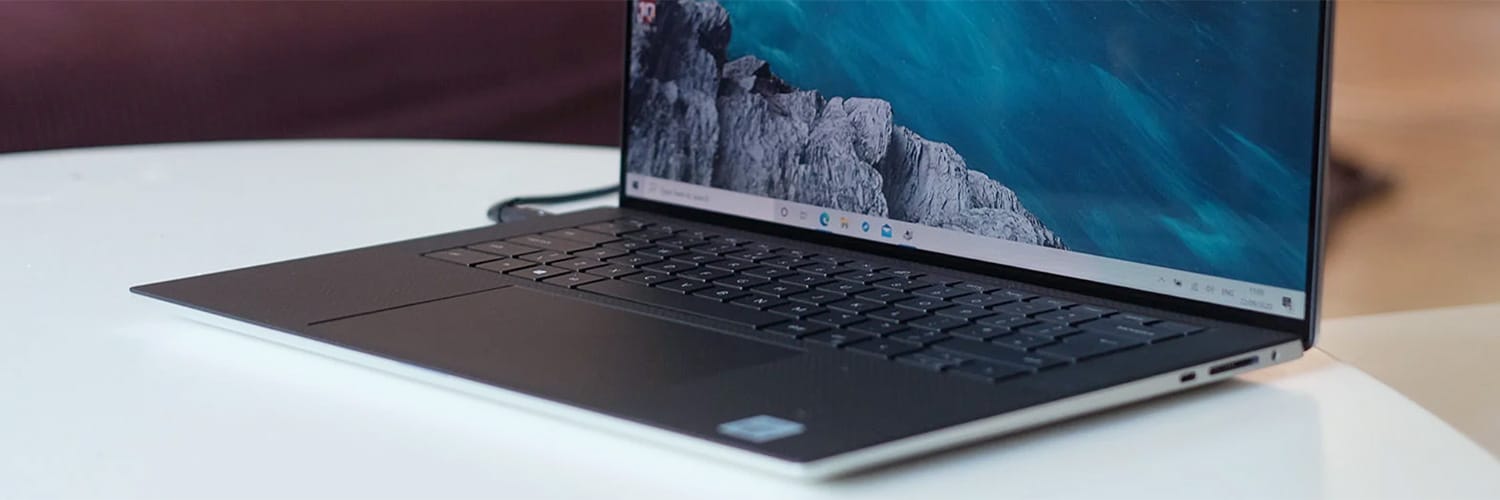
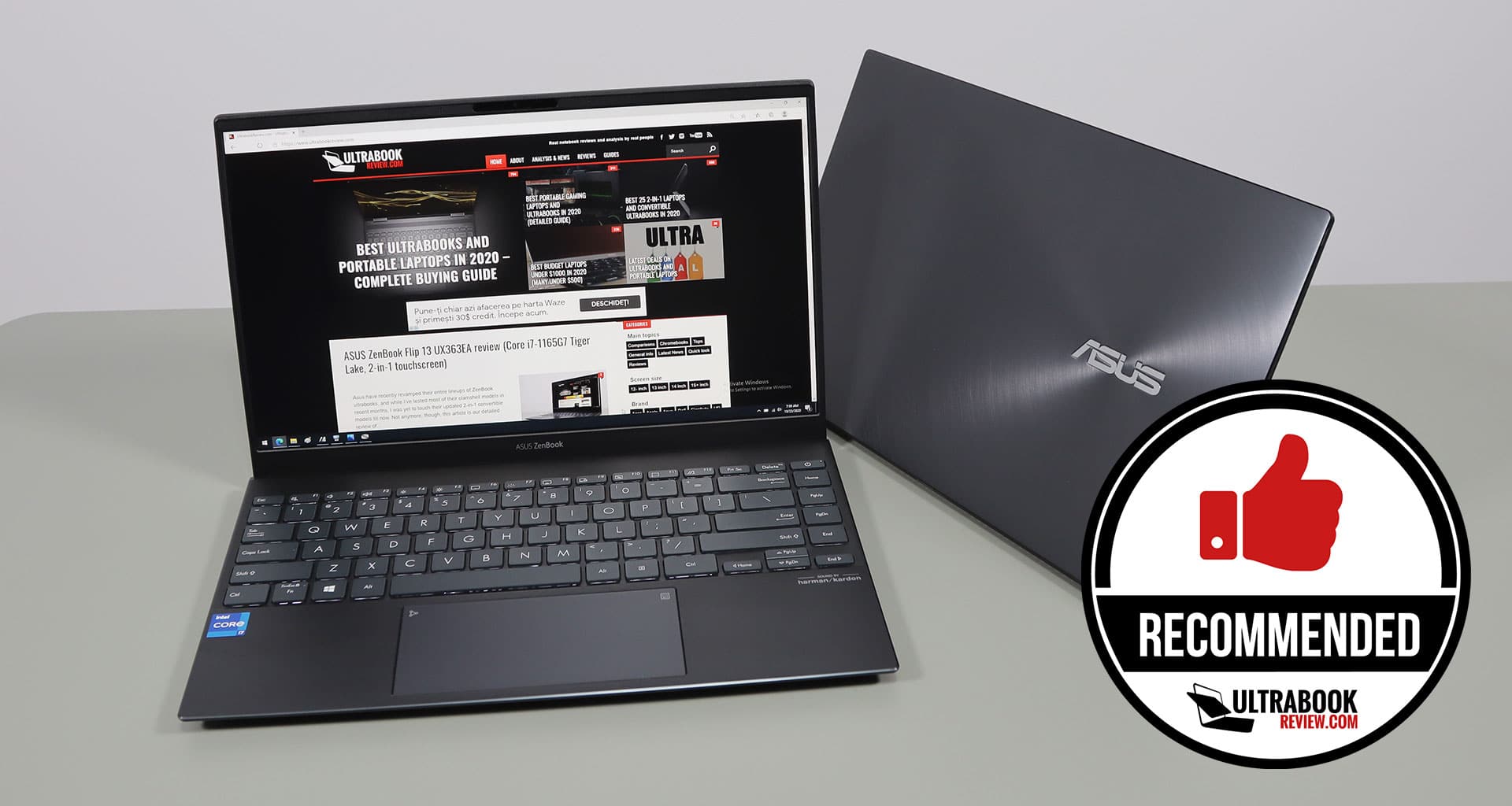
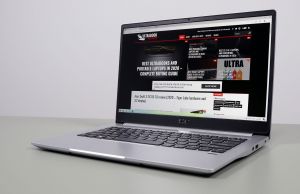
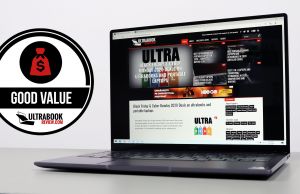
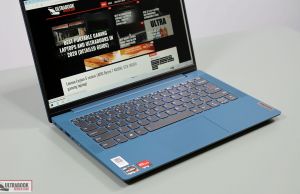
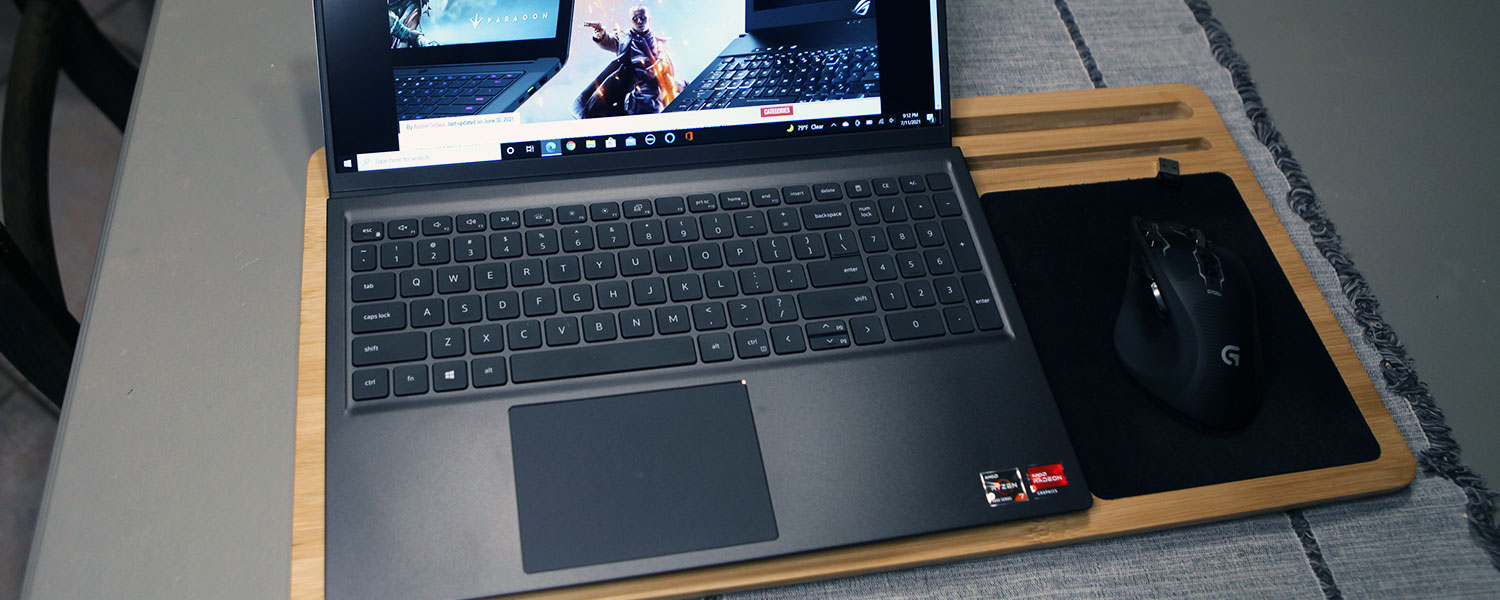

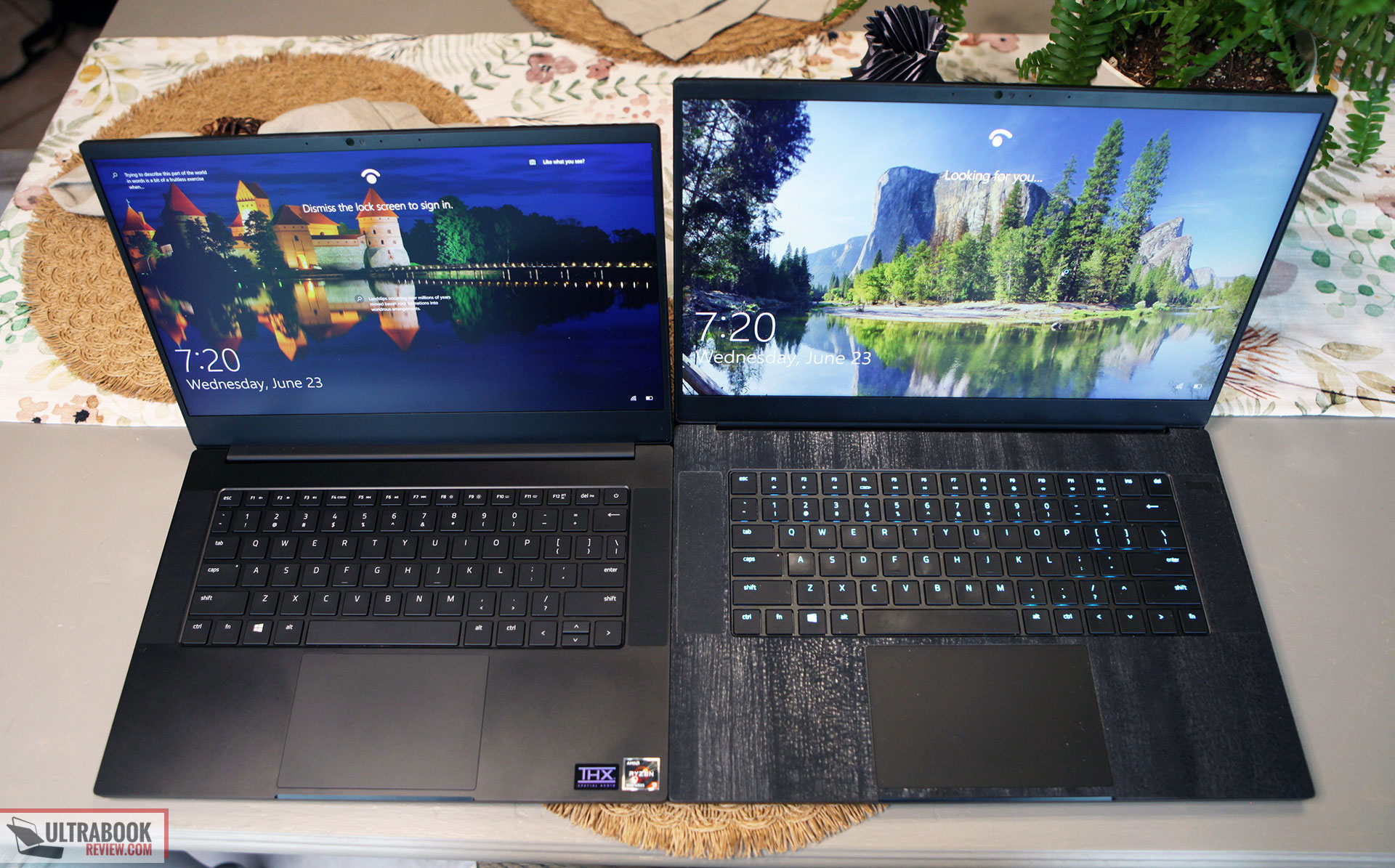




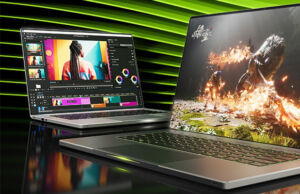
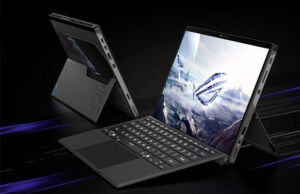
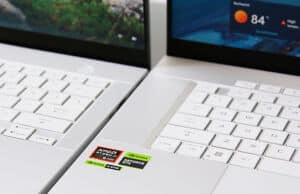
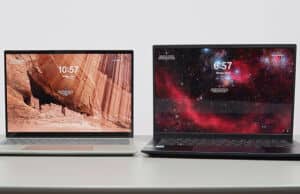
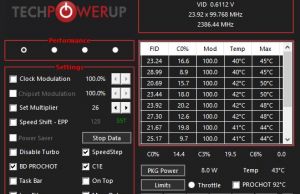



Vicki
June 18, 2017 at 9:45 pm
Thank you for focussing on weight. Now that most airlines stipulate laptops in luggage, weight becomes crucial for everyone not just us wimps with OOS elbows and wrists, so really appreciated the weight info. Been hunting for an under 2k laptop with large screen for a longtime.
Apteryx
Andre
July 31, 2017 at 8:40 pm
Hi, I'm trying to replace my 15 inchmac after that I have had for about 4 years. However, apple has gotten way too expensive with their 15 inchers so I was wondering which do you think is better the 15.6 360 spectre or the 15 xps?
Andrei Girbea
August 1, 2017 at 4:57 am
The XPS is faster, built on Intel HQ processors and with dedicated graphics. It's a great laptop, but you're payign premium or the looks and has its share of flaws. We have a review here on the site for more details.
The Spextre x360 is built on slower Intel U processors and is a convertible.
If you need a computer for everyday use (browsing, movies, texts, etc), both will do fine. For more demanding loads, I'd get the XPS or another laptop with a quad-core processors and 16 GB of RAM.
luis
September 23, 2017 at 1:08 pm
Hi Andrei.
Great list you've got there. So much choice for everyone. Or, at least, for almost everyone. I feel there's something missing. Not your fault, though.
A machine I'd call "the 15-inch MBA". It'd have a core i5 8250u CPU, 8-16GB of RAM, 250-500GB of SSD, a 15-inch full-hd screen with small besels (like xps15) and a 80-90Wh battery. 2 TB3 ports supporting charging, 2-3 USB-A ports, card reader and headphone slot.
Just that. No DGPU, no 2,5" HDD slot. That'd be my dream machine. Sadly, no OEM thinks it'd be profitable to build such machine.
In the bigger body, there'd be space for a better keyboard, and the machine would run cooler than smaller ultrabooks. And I bet it could get into 1,5-1,7kg, which wouldn't be sooooooo much.
Ok, enough with thhis rant.
Keep up the great work!
Andrei Girbea
September 24, 2017 at 5:31 am
That sounds like a very solid option, and hopefully we'll see some devices that come close, but probably with much smaller batteries. I look forward for an updated version of the LG Gram 15, for instance. Not sure about other OEMs, as far as I can tell the KB-R quad-cores are mostly bundled with smaller laptops or entry level 15-inchers. Still, with Coffee Lake and Canon Lake in Q1 2018, we should see some interesting new options.
luis
October 2, 2017 at 1:10 pm
Hi Andrei. Unfortunately, if OEMs keep doing what they've done these years, you're right. But if it doesn't get a bigger battery, it'd not be sooo interesting to me. If it gets just around 55-60Wh battery, I'd prefer the ux330ua or the xps 13 which also get the same battery but are smaller.
About the LG gram 15, LG sacrifices everything just to market it as the lightest 15" laptop.
For example, if asus or dell took the ux330ua or the xps13, made them bigger so they could fit a 15" screen and filled the space inside with a bigger battery, it'd be enough. If they put a slightly better keyboard on it, it'd be perfect.
There are big, heavy, powerful laptops and there are smaller, not so heavy but still powerful laptops (like some MSI and Razer 14" which I don't remember the model names).
So I don't understand why any of the OEMs sells a relatively light machine with the longest battery of the market.
Roee Mazor
November 2, 2017 at 1:17 pm
I would definitely buy this 15" ultrabook!
D Pao
October 1, 2017 at 5:45 am
Hi, Luis.
Just wondering what is this "15in MBA" laptop name?
luis
October 2, 2017 at 12:59 pm
Hi D Pao. It was just a name I made up to try to sumarize the machine I was thinking of. Something with a ULV CPU, no DGPU and loads of battery, like the 11" and 13" mackbook airs but with a 15" screen so it could fit a better keyboard and even more battery capacity, while running cooler than smaller laptops.
Jana
November 19, 2017 at 2:57 pm
Hi Andrei,
I have owned four laptops since the late '90s: 1 Apple, 2 HPs and 1 Asus. I like the Asus I have now, but it's old, slow, and the screen has broken away from the body (!) so it's time for a new one. I have bought previous laptops by just going to a shop and explaining what I want and getting it. Now I'm reading so many online reviews that I'm at a standstill. As soon as I think I've decided on one, I read a review with cons that put me off. Maybe you can help. I use my laptop as my main computer, for personal and work business. The Asus I've had for about four or five years is Q501LA (mine doesn't seem to have the A on it), 15.6" screen. My main job is writing, so I want a keyboard you would recommend as 'excellent'. Just so it's easy to type. A good touchpad is good, too, but I usually use a USB mouse anyway. I had an HP that overheated so badly it burned my hands and I had to get rid of it. I am happy with this Asus as it stays cool, and there is never fan noise or noise of any other kind (also important). For work sometimes I have to have videos playing as well as about 15 tabs open in my browser. So graphics are more important now than they used to be. My computer hangs a lot these days. This screen is 'anti-glare' but not matte. It's also important the screen is clear and easy to read. I do not care if it's touch screen or not, or if it's a 2-in-1 or not.
The reviews of yours I have read have led me back and forth to Lenovo Yoga, the Dell you seem to mention a lot (XP.. woops, forgot the number, brain fried), and Asus computers I've looked a lot at the ZenBooks, VivoBooks, multimedia laptops, basically the whole line. Then I read reviews and am confused again.
Can you help at all? Feel free to email me privately or ask here for more information. I really appreciate your time if you can help. Sorry if I'm rambling. I've been at this for ages and feel like I've actually got TOO much choice.
Oh, price max is around 1,500 USD, and it'd be nice to have a separate number pad, but not essential. I would like something relatively light. I don't travel a lot with my laptop, but occasionally I need to. Durable is good!
Thanks, I'll stop now!
Jana
Jana
November 19, 2017 at 3:12 pm
PS… I don't want a gaming machine or one that has the look of a gaming machine (though I have been tempted by their specs!). I'm a writer/editor, not a gamer. I just have to access a lot of videos and websites at once sometimes. thanks!
Andrei Girbea
November 20, 2017 at 5:53 am
Hi, a few ideas:
1. The whole keyboard experience is very subjective. I for one prefer short travel keyboards lately, but with stiff clicks. Unfortunately each laptop OEM uses a few different keyboards on their machines, so I can't recommend a certain brand and be sure you'd like the keyboard. It's best you give these a try in a physical shop if possible, once you narrowed your options.
2. As far as your requirements and hardware go, I'd look for one of the newer laptops with an Intel core i5-8250 or i7-8550u processors, preferably 16 GB of RAM and SSD storage (256 or 512 GB). You can get these within your budget. There's a list of such devices here: https://www.ultrabookreview.com/17655-kabylake-r-laptops/
3. You don't need dedicated graphics if you don't play games.
Try to narrow down your options from that list, read a few reviews, and get back if you need help selecting between a few final options. There's no perfect laptop, each has pros and cons, but some are better than others and your budget will allow you to pick one of the best models. Hope this helps.
Jana
November 21, 2017 at 5:24 am
Andrei, thank you very much for taking the time! I'll have a look!
-jana
Anas
January 31, 2018 at 2:32 am
Hi Andrei,
thank you very much for your excellent review and listing such kind of laptops, I am very interested in Asus ux530, but when I want to enter the link I found Asus ux430, any help plz!
John
February 26, 2018 at 6:34 am
Me too..
Mary
February 4, 2018 at 9:27 am
Hello Andrei,
This list is most impressive given the time you must spend compiling it. Thank you. Wonderiing if you can help me. I’ve been looking for over a year, and like someone said above, am worried I’ll buy the wrong one. I’m looking for a laptop that I can work remotely very part time with a couple of business clients, and then personal finance etc. I want a number pad as I do bookkeeping. Then would like ssd i5+, long battery life, and trying to stay under 1000. Can you help?
Thank you,
Mary
M. M. Arsiwala
February 21, 2018 at 2:16 am
I am planning to buy Dell XPS 13 i5 (7th Gen) for my daily use. I need complete portability along with good battery life. My use is going to be only browsing, drafting agreements on microsoft word and movies, etc. Suggest me is my choice good enough or should I consider any other laptops too? I am not considering the 8th Gen i5 processor since my usage is very less and I dont think I need that much of processor.
Pedro
May 6, 2018 at 10:16 am
Hi,
I am REALLY considering the Samsung Notebook 9 15" (not the 2-in-1) i7-8550U for $1300 instead of the Dell XPS 15 because of the weight difference…. Do you think it is worth it?
As a PhD in engineering who codes and writes a lot, I need a big screen and the 2.7 lbs Samsung offers is quite tempting… Battery life seems to better than the XPS 15 too.
Could you tell something about the Samsung 9 15"?
Thanks! Great work on this list!
Andrei Girbea
May 7, 2018 at 9:59 am
I don't have any experience with Samsung laptops lately, so no, I can't tell much more than you'll find online about this one.
Mark Augstine
October 7, 2018 at 6:34 pm
HP Spectre X360 series is one of the best laptops ever made, along with the Asus Zenbook UX433 and Asus Swift 3
Shane Maguire
October 30, 2018 at 8:16 pm
Great comparison. Though are you sure the version of the MX150 in the Lenovo 720s is the Max-Q version? Other users online have used diagnostic tools and it seems to come with the full powered version.
Andrei Girbea
October 30, 2018 at 8:28 pm
Hi. You're right, the 720s gets the full-power version of the MX150. Thanks for pointing it out.
Saran
November 25, 2018 at 2:31 am
I have a question about the screen size.
I'm used nearly 6 years to a 15.6" inch screen, but noticed that 14" nowadays are really competitive and I can get the same specs and a slightly more portability. Which is good for me as a student. But I don't also go for a small one, cause streaming isn't nice on small screens.
So my question is, shall I go for a 14 incher, even I'm used to a 15.6"?
Will the difference gonna be big and noticeable, or wouldn't I even notice?!
I'm really struggling with the size decision..
Thanks for any help! :)
Andrei Girbea
November 25, 2018 at 1:48 pm
Ie'd say the difference is noticeable, a 15.6 inch screen is 34.5 x 19.53 cm, while a 14-inch screen is 28.6 x 14.5 cm . If the budget allows, you can look for a 15-inch laptop with narrow bezels, that should be a sweetspot between overall footprint and screen size. There are many such devices out there these days
Emmanuel victor
June 7, 2019 at 5:54 pm
So between the Asus Vivobook s15 and the lg Gram which is better
Andrei Girbea
June 10, 2019 at 12:04 pm
The Gram is a better product imo, but I'd reckon it's also more expensive
Dave P
March 18, 2019 at 12:57 pm
All I want is a 14" laptop / netbook whose BIOS allows legacy drive (IDE) use and that has XP drivers — not everyone is interested in learning a new OS every 36-months, and I don't really want to dredge through all the knackered old VAIOs to find something that uses XP
Does anyone know from experience what the latest and greatest XP-compatible laptop was (the Precisions by Dell spring to mind, but the Ebay parasites usually want £400 for these decade-old laptops), and I read repeatedly about XP netbooks — 14", 2GB RAM and 1.6 GHz or more is all that is required.
Any hardware recommendations?
Joe Massey
March 13, 2022 at 5:07 pm
Great Breakdown. I am on the edge of my seat waiting for the release of the new processors and what they will fit into 13-15" chassis.
I am hoping that you will have a section on Fastest Touchscreen portable by size. period.
Fastest to slowest by 13", 14", and 15".
Yes, battery concerns will be crushing, but many of us travel and need the fastest possible for creation (multithreading) – and touchscreen regardless of battery.
Andrei Girbea
March 14, 2022 at 10:31 am
there aren't many power 13-inchers. ROG X13 and Z13 are pretty much he modern go-tos, alongside the older Razer Stealth 13.
With 14-inchers there are many options, with the Blade 14 the most powerful, the ROG g14 next and then the Acer Triton 300 SE and Alienware X14.
David
January 16, 2023 at 3:12 am
Which of the laptops you cover in this article would be a good candidate for Photographer enthusiasts.
Using Photoshop, Lightroom, Bridge and other high computational programs. Including video editing. I know the more the better (CPU, RAM storage etc) but in reality and towards lower priced models which models would you recommend.
Andrei Girbea
January 16, 2023 at 9:18 am
I'd get a good Intel processor (i7-12700H if possible) with at least 16 GB of RAM (preferably 32) and a good screen (OLED). Something like an Asus VivoBook Pro 15 should fit the bill, but I'd search your local stores for those criteria and see what other options come out.
Magnus
June 30, 2024 at 3:20 pm
Hi Andrei,
I have similar circumstances as Jana, in the thread as of Nov. 2017, with multiple tabs open, but I use them for real-time market data, including real-time graphs.
Today I have one extra monitor (27 inch), and I am considering adding one more. I have an older HP Pavilion (i7-6500U), that cannot handle all the real-time data.
I have read (yours and others reviews) about the Asus Rog Zephyrus and there new release on GA605, and that might be an option, but I have read about the high temperatures. You are also a fan of Razer Blade, so that might also be an option.
I would like quality, durability (including travel), a laptop that can handle the above without latency, preferably with numpad and an ethernet port.
Andrei, are there any laptops in your reviews that could be a good option with regards to the above?
Thank you and have a nice Sunday!
Magnus
Andrei Girbea
July 3, 2024 at 1:38 pm
There are a lot of laptops that can meet your criteria, your question is too generalist for me to pinpoint specific suggestions. I'd say try to figure out yourself some of the options that you preffer, and then I can help decide on them.